My journey to this year’s Heimbrau Convention (HBCon) was rather turbulent: just a few days before I was supposed to travel from Berlin to the city of Romrod, the train driver’s union announced a strike that affected my initial journey from Berlin to Fulda.
Fortunately, I managed to find an alternative route by booking alternative provider FlixTrain, which in the end was slightly quicker and cheaper than Deutsche Bahn. The journey itself went fine in the end.
This year, I was invited to speak about Vienna Lager at HBCon, the largest (and probably only?) home-brewing conference in Germany, all community-organised. As in previous years, the event venue was Schloss Romrod, a historic castle in the city of Romrod that got renovated to be used as a hotel.
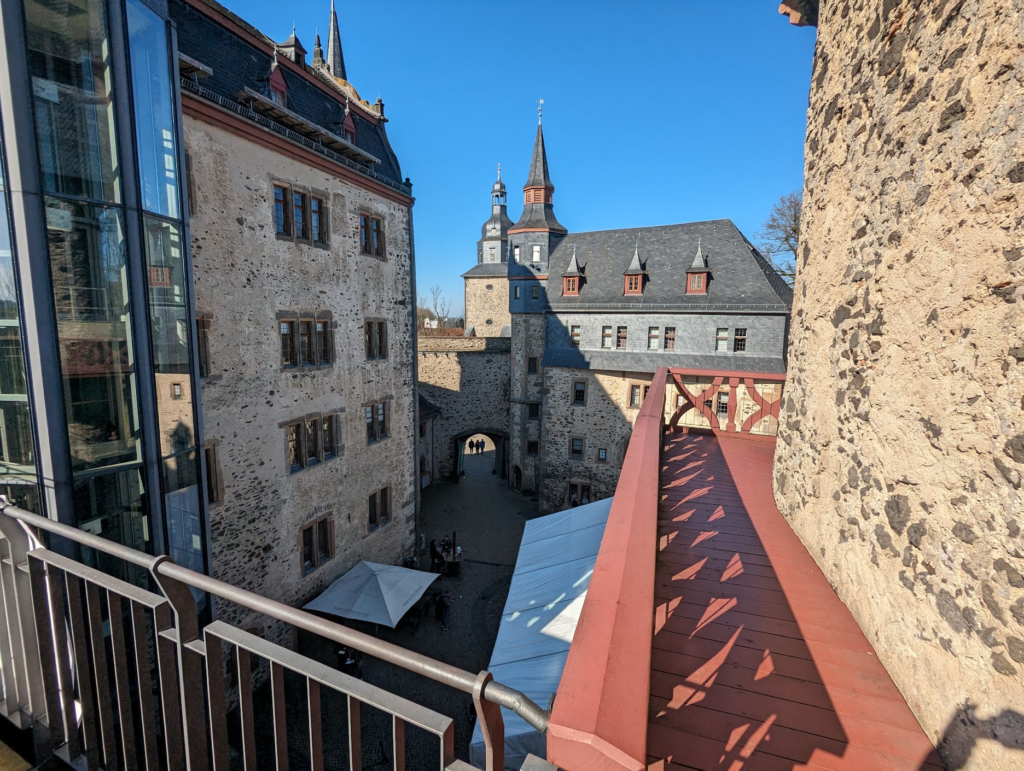
This was actually my first time to speak in front of such a large audience about this topic, so I was rather excited and nervous, with weeks of preparation beforehand.
With HBCon being community-organised and community-driven, there were of course ample opportunities to share and show off your own beer. For me, I decided to bring a little specialty, namely the Bretted Imperial Stout I had brewed with Ben back in November 2022. Unfortunately, the bottles did not handle the journey well, and even though they remained intact, 2 out of 3 bottles were gushers. I had packed them cold, and refrigerated them again shortly after I arrived in Romrod, but I have a feeling this may not have been enough time for the beer to settle. A bit of a bummer, but the beer that I could serve was well-received, in particular by the few people who specifically said they liked dark beers. The slight acidity from the acetic acid that Brettanomyces produces under the presence of oxygen really does add something to even a strong beer, it just makes it ever so slightly more refreshing, and gives the beer an impression of dryness.
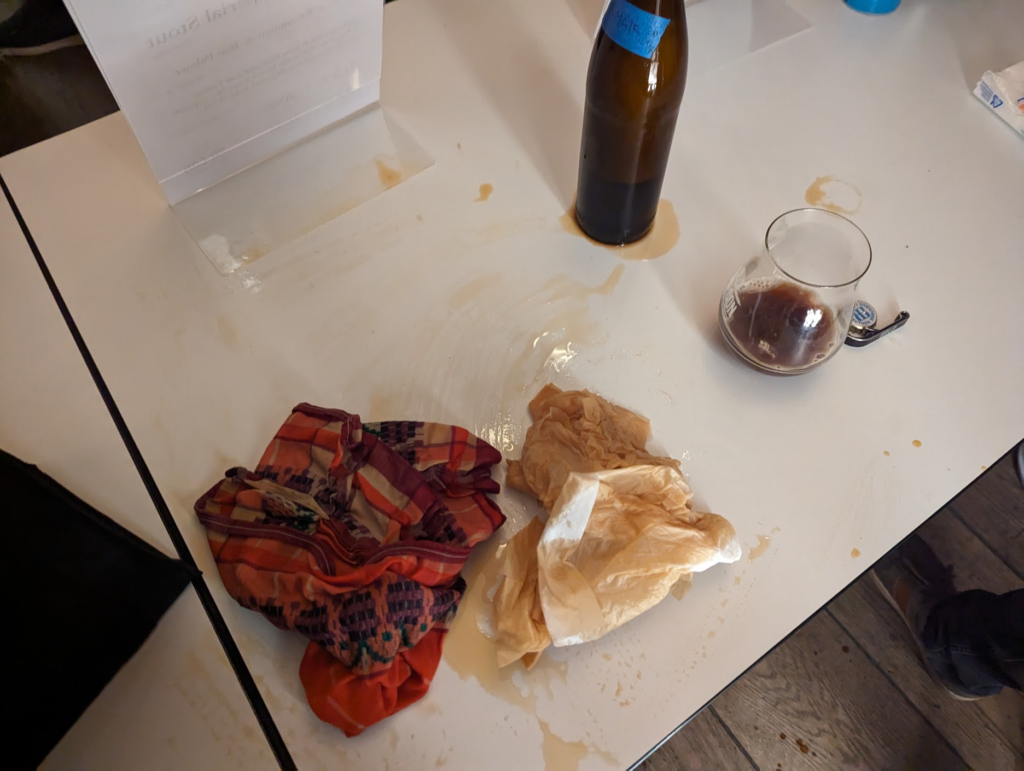
Of course not all beers were top notch. While I had quite a few really well-made home-brewed beers, there were also some good examples for specific off-flavours, or simply weird flavour combinations that just didn’t work for me.
Friday was arrival day and a first opportunity to meet people and share beer. Since my talk was scheduled for Saturday 9:30am, I decided to take it easy and did not drink very much on Friday evening. I still enjoyed the opportunity to try original Polish Grodziskie, which was actually much lighter in smoke than what I thought it would be. It was an incredibly refreshing beer that would be perfect for summer.
Saturday morning was easy, I got up early enough, had breakfast, and then went to the venue where my talk was supposed to happen. Due to the large number of sessions, the convention had additional venues outside the castle, some only reachable by shuttle bus, but this one fortunately was only 5 minutes of walking away.
My talk went well, and even though I had practiced my presentation and timed it, in the end I spent 10 more minutes than planned waffling about the history of Vienna Lager and how to brew it. The Q&A session was good but relatively short, and the feedback afterwards was that people really enjoyed my talk.
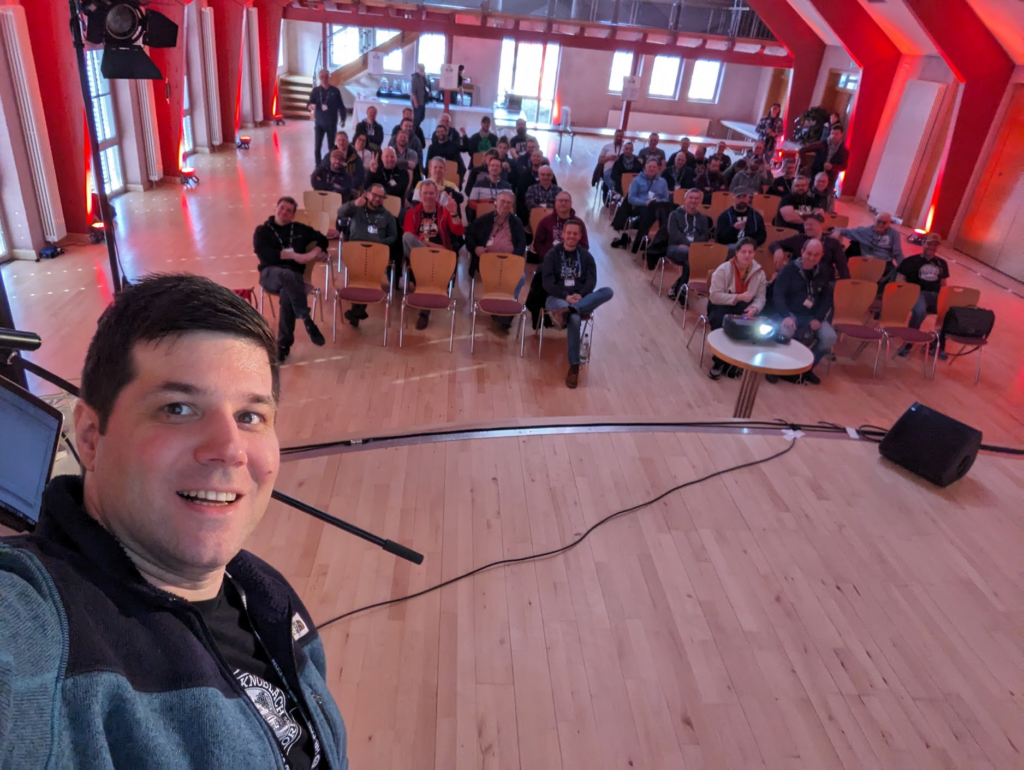
After my session, the Polish Homebrewers Association presented Baltic Porter, with a good overview over the history of why Porter became popular in Poland in the first place, how it’s defined nowadays (the Polish view on Baltic Porter apparently diverges quite a bit from the BJCP style guidelines) and how to brew it. Of course we also got to try Baltic Porter, in our case Grand Baltic Porter by Browar Amber. What an incredibly smooth beer, not too much roasted character, but with a hint of sweetness and some sherry-like oxidation character instead.
The third and final talk in a row that I attended was Jan Brücklmeier talking about historic small beers in Germany, specifically the kind that was made from the last runnings during brewing (Nachbiere). Of course his presentation was not just strictly about small beer, and he put out some interesting hypotheses about German brewing in general.
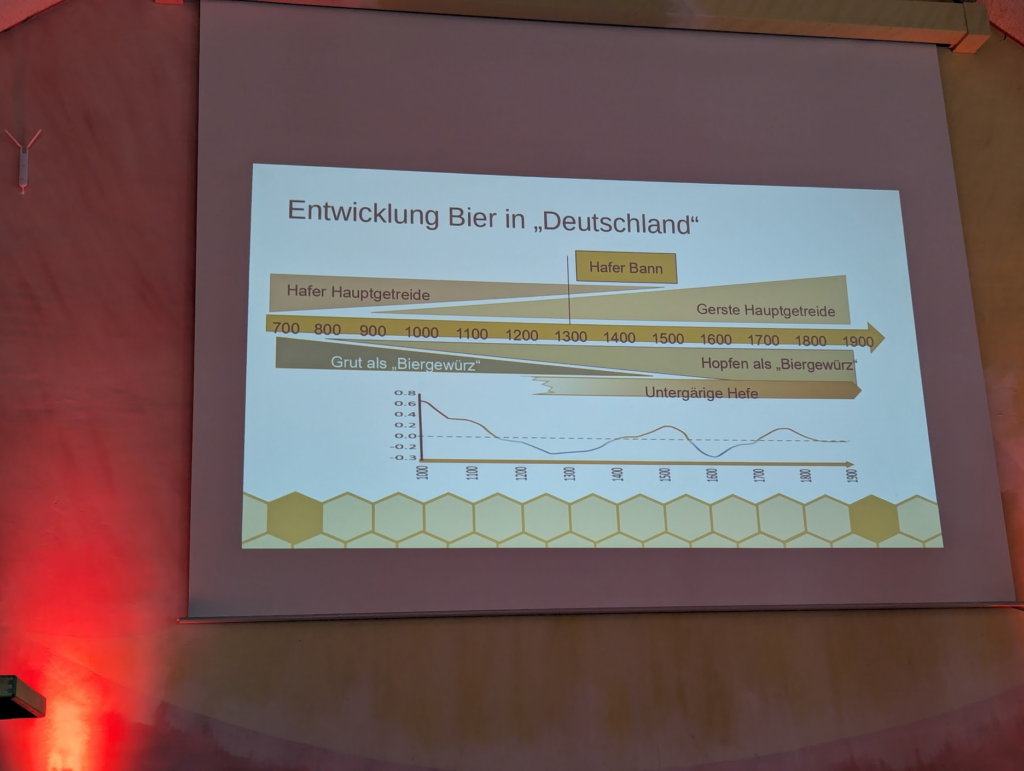
In particular, he thinks that part of beer’s success was due to the first small ice age: wine became harder to grow in the north of Europe, which caused people to switch from wine to beer as the former became a more expensive imported product. At the same time, barley became more prevalent, in particular because it takes fewer warm days (> 5°C) for it to ripen, while oats require slightly warmer temperatures (> 7°C) for about two months longer. At the same time, barley produces a significantly larger yield.
This switch from oats to barley as brewing grains probably also helped with the popularisation of hops over gruit, as hops and oats don’t work nearly as well flavour-wise as hops and barley. Higher amounts of hops allowed beer to be fortified sufficiently to be traded over longer distances, something that was definitely done by the Hansa in the North of Europe. And finally, lower overall temperatures probably also created an environment in which bottom-fermenting yeast would be much more suitable.
Besides a more detailed explanation of specific Nachbier techniques, we also got to try something special: Heinzlein, the original Bamberg Nachbier, as recreated by Heller brewery from Bamberg (which some of you may recognise as the brewery behind Schlenkerla). Normally, this is a bottled beer only, but specifically for this event, Jan Brücklmeier managed to organise a keg of it.
I had had the Heinzlein a few years ago when it was officially released. I thought it was okayish back then, but clearly too astringent and thin. Well, I can gladly say that it seems to have lost most of that astringency, making it so much nicer to drink and actually want to have a second one.
After a lunch break, the highlight of the day awaited me: I was booked in for a seminar with Stefan Zehendner, owner and brewmaster of Mönchsambacher brewery not far away from Bamberg. He guided us through all the details of how we brewed the Mönchsambacher Weihnachts-Bock: the idea and history behind it, all the details about ingredients, whether it was the brewing water, the malt, the hops or the yeast, and of course all the processes, from mashing (it’s a single decoction mash) to fermentation to lagering, followed by a few interesting anecdotes and of course an extensive Q&A.

Frankly speaking, this was the most amazing and productive session at the whole event. In less than 90 minutes, I learned more than ever before about all the intricacies of brewing an easy-drinking Bock, Franconian style, going into all the details I had never even thought about. I feel like it gave me enough information to be able to brew a fairly good clone version of Mönchsambacher Weihnachts-Bock, or develop my very own recipe if I wanted to. I also gained more insight into the water profile outside of Bamberg, which according to Stefan Zehendner contributes a significant part of the character of his beers.
I intend to write down all the notes I’ve taken into a more easily digestible, separate article that actually makes sense. So watch this space!
I was then hanging out with friends at the “Meet se Brauverein” (sic!) event, where home-brew clubs from all over Germany could present themselves by — of course — serving beer and talking about what they were doing. One of the clubs served an ESB poured from a beer engine which was quite alright (maybe a bit astringent, but bringing and setting up a beer engine shows the amount of dedication that went into presenting that beer). Another one served (keg) mild and old ale (from bottles), even encouraging people to try a blend of both. Of course I had to try something fun like that, and indeed, the best version was the old ale blended with the mild.
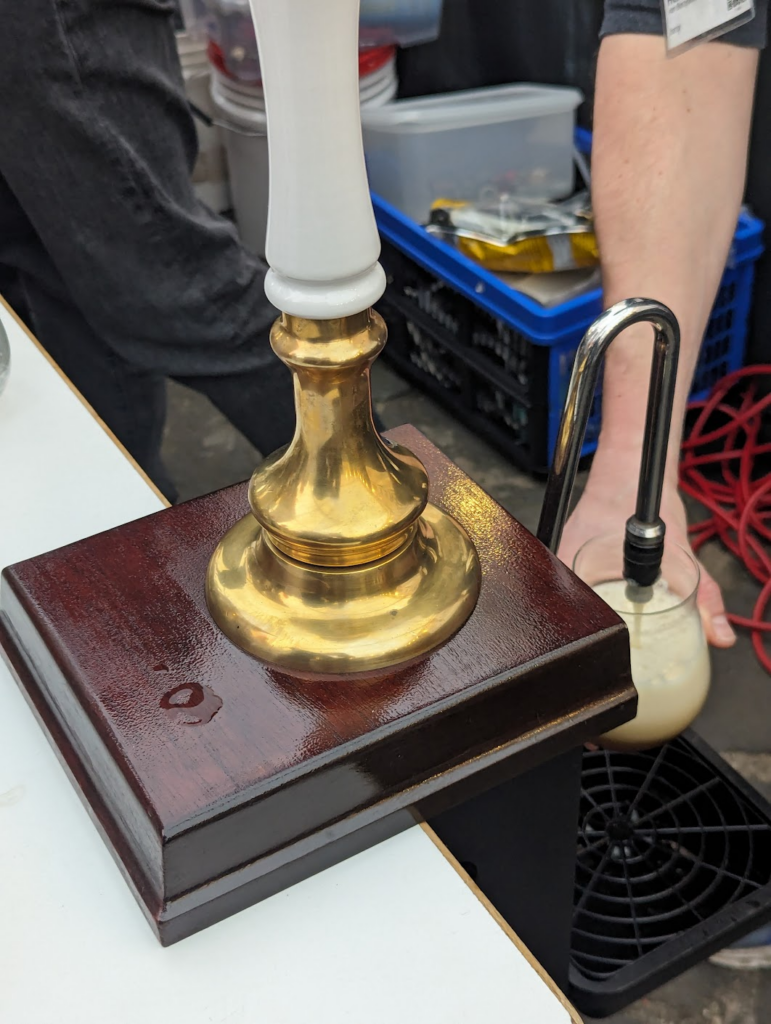
After dinner in the completely overrun local Italian restaurant (thanks to the conference; the locals looked properly annoyed, presumably because they weren’t served quickly enough), we then headed to the final event of the Saturday, the home-brewing competition. This competition was done by popular vote, where people who had preregistered for it could present their own beer of any style, and the audience could sample the beers and vote on their favourite. This was a bit underwhelming, as some of the beers I tried were really not good. On the positive side, I had a pretty good Berliner Weisse, of which I had two glasses and for which I eventually voted as my favourite. That was a pattern I noticed: a lot of home-brewers put a lot of focus on hazy IPAs and other beer styles, often with wonky adjuncts, while simple, straightforward, well-brewed classic styles were rather rare.
Frank Christian (@humble_beer) entertained us instead by serving a wide range of beers he had brewed himself, like the Truman 1890 Export Stout based on Ron Pattinson’s recipe served on nitro, a saison blended with lambic (if I recall correctly) and then left to age, and various other mixed fermentation and sour styles, all absolutely amazing.
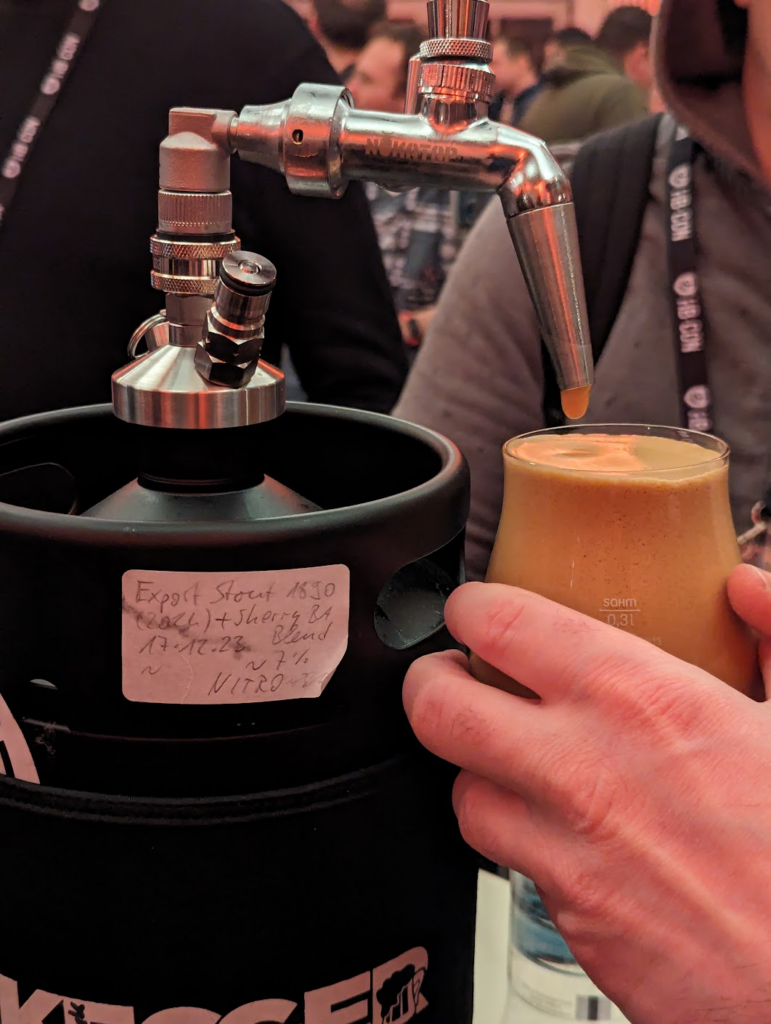
I eventually called it a night, went back to my hotel room and went to sleep, so that I could be fit enough to get up for Sunday’s final event, the Weißwurst breakfast and the raffle. This was a wonderful finish to the whole event, everyone getting together for one last time, eating Weißwurst and a pretzel, drinking Hefeweizen (the options were Mönchsambacher Hefeweizen and Gutmann Hefeweizen, I chose the latter) and hoping to win in the raffle (I didn’t win anything, btw).
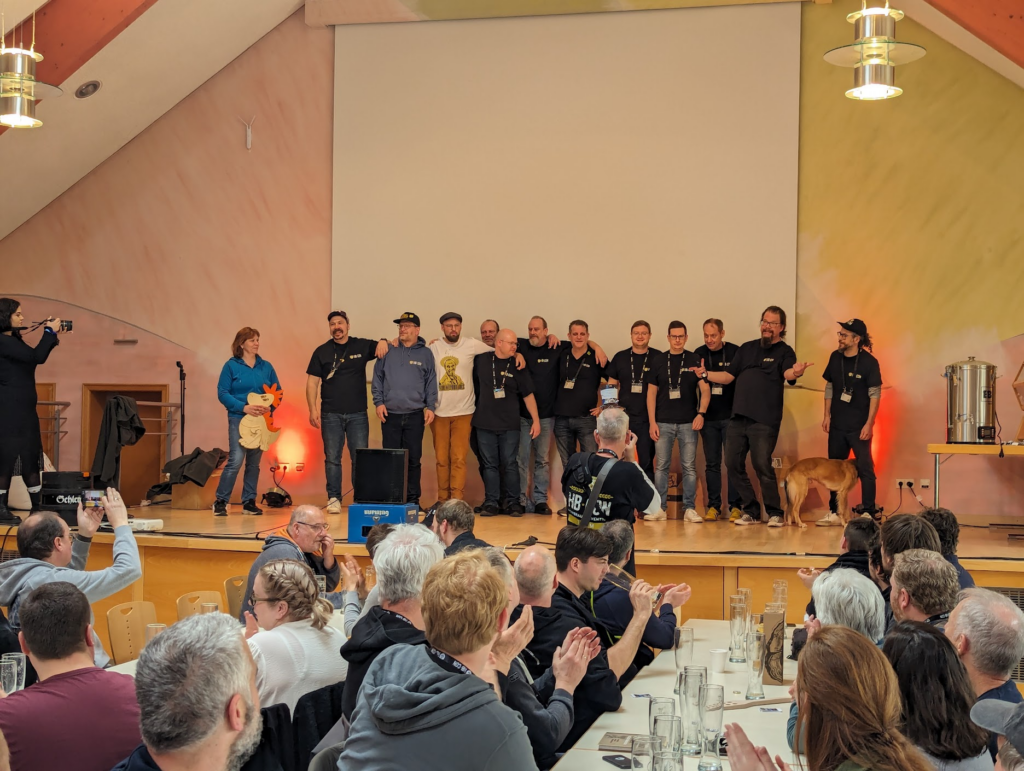
Heading back home was a slight problem, but thanks to some friendly chaps at the conference, I got a hitch to the next train station so that I could catch my train. While waiting for my train, I actually ran into other home-brewers who had attended the event and had a bit of a chat. The rest of the journey was uneventful, and all I can say is that Fulda looks incredibly boring.
All in all, going to that event was a great experience. At the same time, if I hadn’t been invited, I’m not sure whether I would take part again on my own. Traveling to what feels like the middle of nowhere Hesse, Germany just took a long time, was stressful, booking a hotel room could potentially be quite pricey, and getting around is hard because public transport coverage is spotty. If traveling and staying there were easier, it would make it easier for me to decide to join in next year, even just as a regular audience member, maybe even a bit better prepared in terms of bringing and serving my own home-brewed beer.

